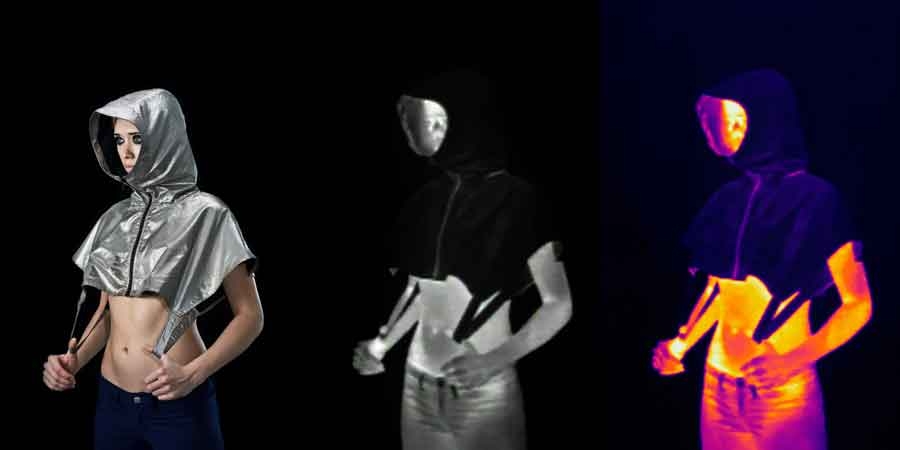Adam Harvey’s work can be conducive to a certain type of sensationalist media coverage. Indeed I first came across his Anti-Drone project (2013) – in which Harvey produced three items of clothing, including a burqa and headscarf, made from a metallised fabric that renders the wearer all but invisible to thermal imaging surveillance – through just this type of reporting.
But the mainstream media do the artist an injustice: first of all, this is not just some conceptual one-liner. Harvey puts a lot of thought and energy into the actual production and testing of his works to ensure they actually function. So, for example, the artist developed and manufactured Off Pocket (2013), a little pouch into which you can place your mobile phone so that all incoming and outgoing signals are blocked. It’s not just a piece of political commentary on our surveillance society, but a working product that anyone can buy at Harvey’s website (I have one myself).
The thing that interests me most about his work, however, is that it addresses the fact that in the twenty-first century we’re very close to the point, or have passed the point, where most of the photographs and most of the images made in the world are not produced for humans to see: they are made by machines for other machines to view and compute, from automated license-plate or passport readers, to grocery store price scanners. With works like CV Dazzle (2010–), a research project into how makeup and hair styling (or other modifications) can be utilised to confuse facial recognition software, Harvey is moving beyond the representational paradigm of nineteenth- and twentieth-century image-making and consumption, and developing a visual and conceptual language to engage a world of seeing-machines, post-representationalist images and the dynamics, power and technology that characterise the not-too-distant future.
Originally published in the March 2014 FutureGreats issue, in association with EFG International
